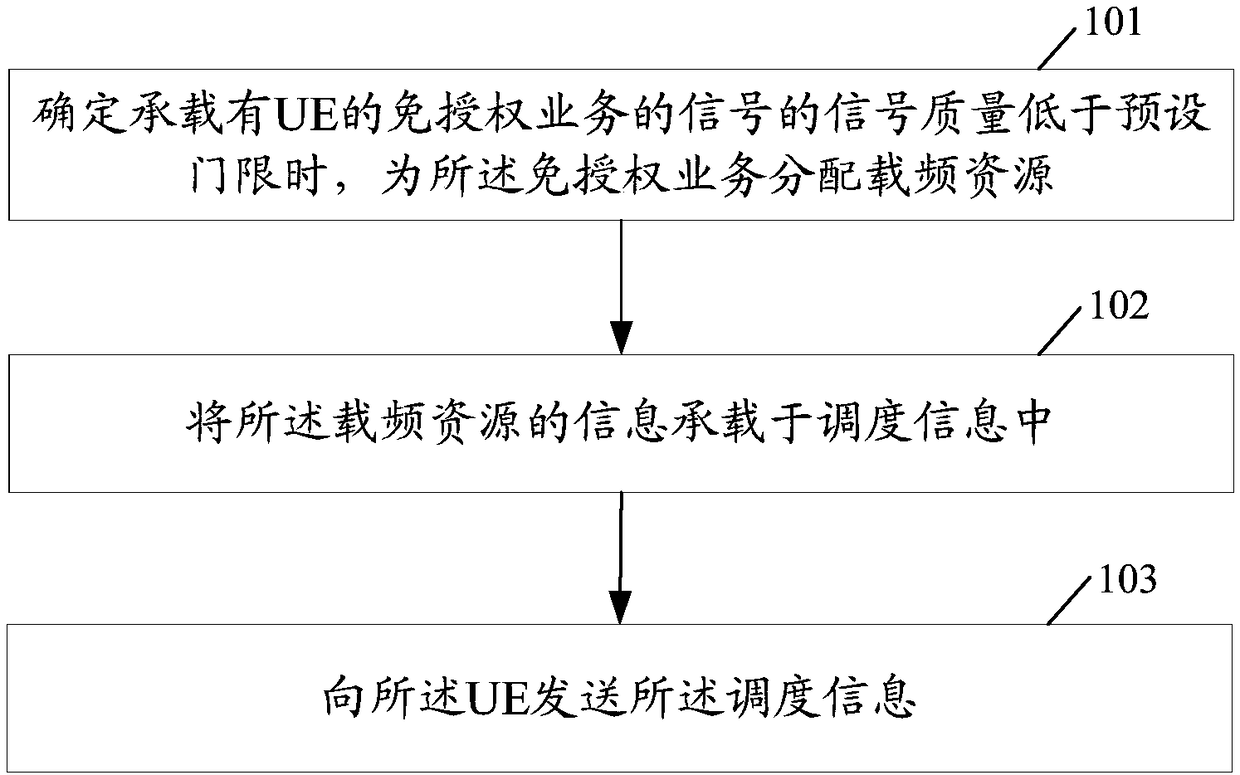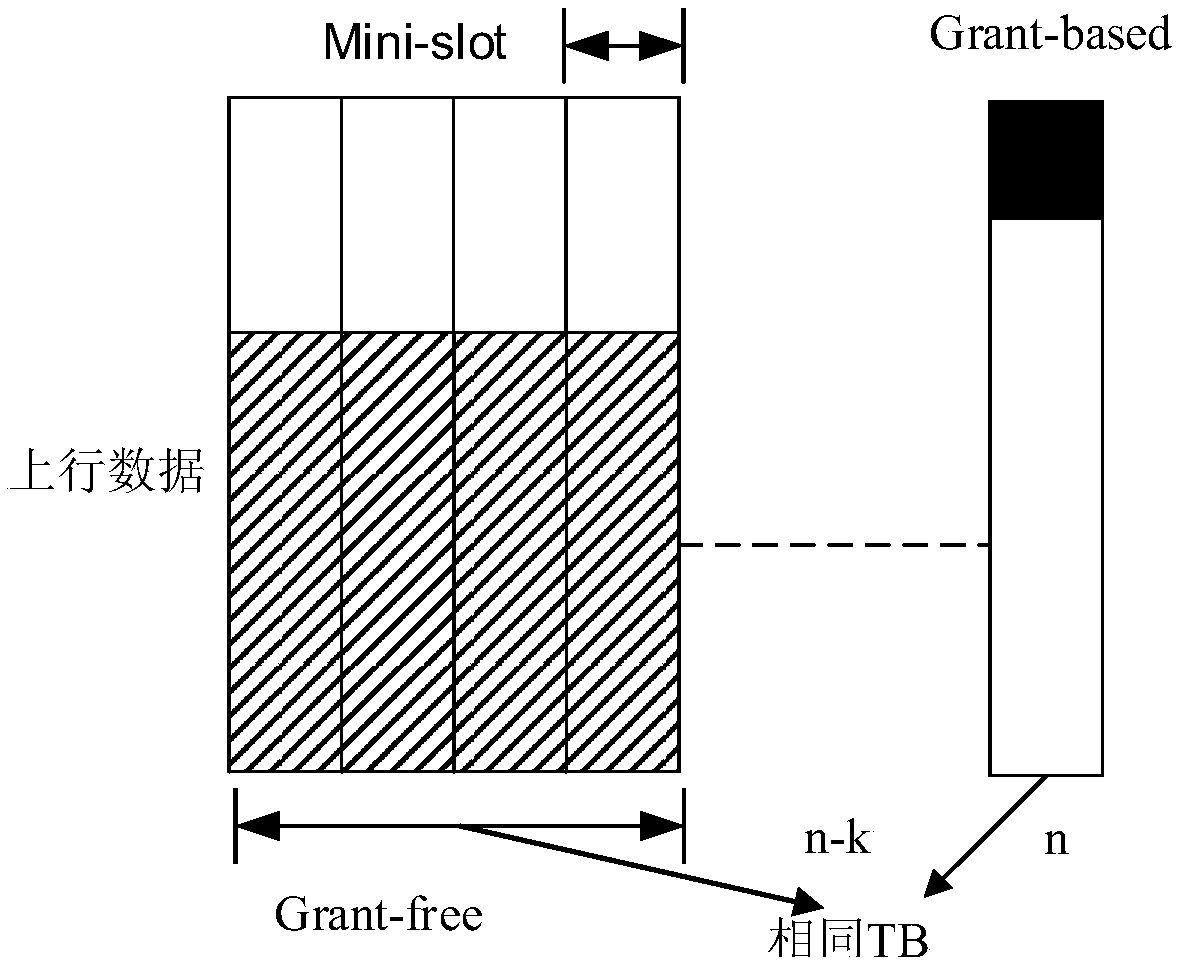Resource allocation method and device, processing method of unauthorized service and user equipment
A technology for user equipment and resource allocation, applied in the field of communication, can solve problems such as poor signal quality, achieve the effects of reduced delay, guaranteed service quality, and improved transmission reliability
- Summary
- Abstract
- Description
- Claims
- Application Information
AI Technical Summary
Problems solved by technology
Method used
Image
Examples
example 1
[0122] The process number used by the license-free service is pre-configured between the base station and the UE. For example, configure the authorization-free service process number as 0. When the base station determines that there is a license-free service conflict or the carrier frequency performance of the license-free service is not good, the base station can allocate carrier frequency resources for the conflicting license-free service or the license-free service with poor carrier frequency performance, and send the UE corresponding to the license-free service Send scheduling information, and schedule the license-free service to the allocated time-frequency resource position for retransmission. In this example, when the UE determines that the current service is an authorization-free service, the process number of the authorization-free service is defaulted to the process number pre-configured by the base station for the UE. Therefore, when the UE sends the license-free s...
example 2
[0126] The base station carries delay indication information in the sent DCI, and uses the DCI as a part of scheduling information, for example, the delay indication is n-k. For the delay indication information carried in the scheduling information received in the mini slot n, it means that the delay indication information indicates the scheduling of the license-free service in the mini slot k before the current mini slot n. image 3 It is a schematic diagram of determining the authorization-free service process number based on the delay indication information in the embodiment of the present invention, as shown in image 3 As shown in , where the time-frequency resources indicated by the hatched part are uplink time-frequency resources, which are used for sending license-free uplink data. , the black part represents the control information on the scheduling of authorization-free services.
[0127]After receiving the scheduling information, the UE first determines which previ...
example 3
[0129] The base station can configure the UE to insert process ID information into the license-free service when sending the license-free service, that is, the process ID information is sent together with the data. Process number information and authorization-free business data are coded separately, such as Figure 4 , Figure 5 As shown in the figure, the hatched part represents the reference signal (RS, Reference Signal), the blank area represents the data, and the black part represents the process number information; in this example, the encoding method of the process number information is different from that of the authorization-free service data. In this example, the process number used by the license-free service is not pre-configured between the base station and the UE. Instead, the UE determines the process ID for the license-free service when sending the license-free service, and sends the process ID determined for the license-free service to the base station togethe...
PUM
 Login to View More
Login to View More Abstract
Description
Claims
Application Information
 Login to View More
Login to View More - R&D
- Intellectual Property
- Life Sciences
- Materials
- Tech Scout
- Unparalleled Data Quality
- Higher Quality Content
- 60% Fewer Hallucinations
Browse by: Latest US Patents, China's latest patents, Technical Efficacy Thesaurus, Application Domain, Technology Topic, Popular Technical Reports.
© 2025 PatSnap. All rights reserved.Legal|Privacy policy|Modern Slavery Act Transparency Statement|Sitemap|About US| Contact US: help@patsnap.com



